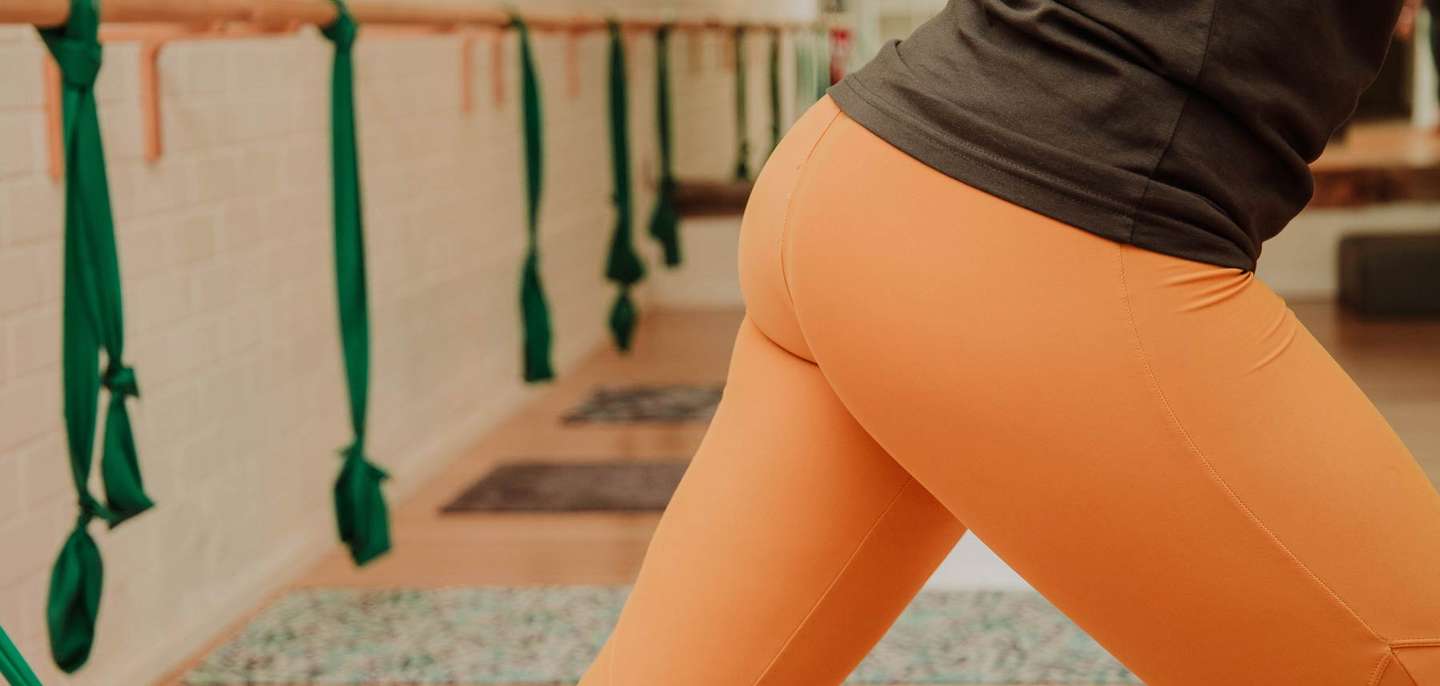Goldisocks and the 3 Glutes
My clients know my love affair with good strong glutes and how much the ‘I found them’ face in a particular Pilates exercise makes my day. Besides keeping their butts toned and strong, and filling up the back of their pants, this work also helps them to stand, walk and run in the best way they can. It also means that the numerous joints above and below have a better chance at working optimally; preventing poor movement, pain and injury.
So, in the name of one of my favourite family of muscles I bring a fairy tale with a very important message for anyone who moves with two legs, one leg or even just a pelvis.
There once was a middle-aged man named Goldisocks, who had glittering gold socks, but suffered from back pain, hip pain, knee pain and sometimes ankle and shoulder pain. Goldisocks also suffered from ‘flat saggy bottom syndrome’ (figure 1) and found it difficult to fill out the back of his pants properly.
One day Goldisocks was hobbling through the Forest of Discomfort and Muscular Dysfunction and came a upon an empty cottage with multiple chairs. Not able to stand up for too much longer, he went in to sit down for a bit. Unbeknownst to Goldisocks, the cottage was home to the Glute family, including Papa Glute, Mama Glute and Baby Glute (figure 2 & 3).
NEED FIGURE 1
figure 1 (above) : Saggy Bottomsufferer, [http://fit-school.co.uk/2017/06/16/over-50-need-to-know-about-saggy-bottoms]
figure 2 (below) : Glute (Gluteal) muscle family, [https://www.custompilatesandyoga.com/gluteus-maxim…
NEED FIGURE 2
It was unfortunate for Goldisocks that the Glute family were not home. Had they all been present, they could have helped Goldisocks feel better and stronger, walk further without pain, and maybe even run and alleviate other various aches and pains.
The Glutes as a family were out working together to keep someone else’s pelvis stable providing important support to the body parts above and below, and to help move thigh bones at the hip socket in the safest and most efficient way [1-3]. They were also working to help people have nice perky bottoms [4].
NEED FIGURE 3
Figure 3 (above) : Gluteal muscles, lateral view, [http://www.simonwitney.co.uk/the-all-important-and-underutilised-clam-exercise/glute-medius/]
Papa Glute (Gluteus Maximus), was the biggest and strongest of all the family and his job was to help movement at the hips and thighs, especially in walking and running. He worked closest to the outside of the body [3, 5] and was critical in prevention of ‘flat saggy bottom syndrome’.
Mama Glute (Glute Medius), was less bulky than Papa Glute and not as powerful in moving or walking, but her job was equally important, and Papa Glute did not work well without her [1, 6]. One of Mama Glute’s most important roles was holding hips and pelvis securely together from the sides so that the human body was stable and did not fall over or wobble about in activities such as standing (especially on one leg), walking and running. She also worked to turn the thigh bone outwards and move it sideways [5].
Baby Glute (Gluteus Minimus), stayed behind Mama Glute and mimicked the jobs of Mama and Papa Glute, [1, 5]. Although his role was small, it was also very important, and Mama and Papa Glute relied on his help and again, did not perform at their best without it.
If for any reason a member of the Glute family could not do their respective jobs properly, problems may arise for their neighbouring muscles, both near and sometimes far. The jobs of these other muscles may become more laboured, if the Glutes could not help to maintain a nice stable pelvis or move the thigh bones properly (eg Trendelelenburg and Coxalgic gait pattern [1, 6],figure 4)
NEED FIGURE 4
Figure 4: Different gait (walking) patterns showing normal and poor pelvic stability and movement patterns, McGee, 2018
Neighbouring muscle families (i.e. in the hips, knees and ankles, spine, or even the shoulder joints) were always more than happy to help, if needed, to make sure the body could stand and move However, these families were not always able do the jobs of the Glutes very well or for very long, as it was not what they were made for. Sometimes they would end up overworked from trying to do their own jobs and that of the Glutes and end up tired and cranky. As a result, the body they worked on could end up with faulty movement, pain and possibly injury [1, 2, 6]. All the muscles agreed that making sure the Glute family were happy and healthy was very important for those moving around on two legs.
Whilst Goldisocks sat and took painkillers, he looked around and saw family photos of the Glutes working together performing exercises such as ‘Bridges’ and ‘Clams’ (figure 5 & 6). Their owner looked strong and stable, with wonderfully fitting pants.
‘Gee they look happy… and strong’ he thought, ‘they don’t look like anything is hurting at all. Maybe if I found out where and how the Glutes worked, I could be that happy and comfortable too!’
NEED FIGURES 5&6
Figures 5 & 6 (above)
With his new-found inspiration and temporary pain free mobility (thanks to the medication), Goldisocks marched his way home to search Google to find someone somewhere in town, who might help him invigorate his own glutes and teach them how to work properly. Luckily, he found a wonderful Pilates studio and not too long afterwards was able to easily walk back to the Glute Family residing in the Forest of Discomfort and Muscular Dysfunction to leave a ‘thank you’ card in their letter box.
A final note: The above story is fiction, whilst the characters are based on real muscle function, the ‘flat-saggy bottom syndrome’ and ‘the Forest of Discomfort and Muscular Dysfunction’ are not. However, maintaining strong healthy glutes and doing Pilates is recommended by the author! ?
Written by Lizzi Webb, edited by Nicki Hanssen

